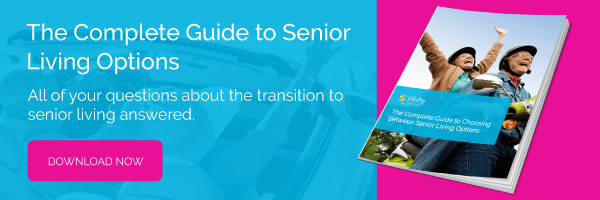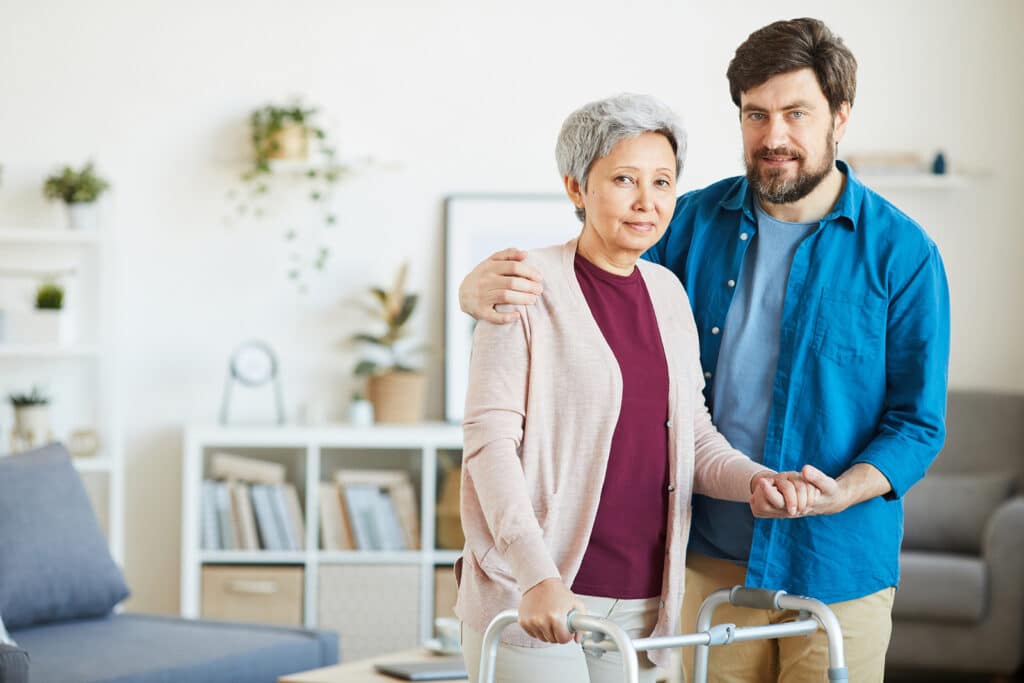The home is typically the place where we feel our most comfortable and secure. However, as we age, issues with limited mobility, vision, hearing, balance, and even cognitive impairments can raise safety concerns in the home environment. At that point, we need to consider whether to make modifications at home- so it’s safer and more accessible or whether to consider a move to a senior living community where safety features are already in place. Here are common modifications you can make at home as well as standard senior living safety features to help you compare.
What It Takes to Improve Safety at Home
When it comes to improving safety and accessibility at home, these are some of the most common modifications you can make.
- Reduce the risk of falls: Falls are one of the top health risks for seniors. In fact, nearly a third of U.S. seniors fall each year, and about half of all falls that require hospitalization take place at home- according to the CDC. To reduce the risk at home, clear walking paths, add handrails to both sides of the stairs, make sure to have adequate lighting, remove throw rugs, install grab bars and non-slip mats in the bathroom, and avoid using step stools or ladders (get a reach stick instead). Also, make sure you have the appropriate mobility devices to help you move around the home safely.
- Focus on fire safety: Behind falls, fires are the second leading cause of injury at home, according to the Home Safety Council (HSC). To reduce the risk of fire, stay in the kitchen when cooking and avoid wearing loose-fitting clothes. Keep flammable items (dishtowels, paper/plastic bags, curtains, etc.) at least three feet from your cooktop, and keep the grill 10 feet away from the house, shrubs, or bushes. Avoid space heaters, if possible, otherwise, keep them at least three feet from anything flammable and always turn them off when leaving the room. Also, inspect your furnace and/or fireplace yearly, check smoke/carbon monoxide detectors semi-annually, and have easily accessible fire extinguishers. Finally, never leave a room with a candle burning, and don’t overload electrical outlets or extension cords.
- Reduce medication errors: According to the Department of Health and Human Services, adverse drug events also account for approximately 280,000 hospitalizations annually. As many seniors manage multiple prescriptions each day, extra vigilance is critical to avoid errors. To reduce the risks, always follow the doctor’s instructions exactly in addition to reading the package insert. Also, make sure to take medications for the full duration of the prescription (even once feeling better), refill prescriptions early to avoid running out, and use pill organizers or apps to keep track of medications and dosage times.
- Be prepared for emergencies: One certainty in life is that the unexpected will happen- at some point. And while all households should be prepared for emergencies, as you get older and/or live alone it’s particularly critical. In addition to 911, have poison control as well as your neighbors’ numbers handy. Make sure to identify at least two ways to exit your home in case of an emergency. Also, consider getting a generator in case of a power outage to keep oxygen machines functioning. We also believe a personal emergency response system that contacts first responders and/or a friend or family member in an emergency is a must.
While most of these modifications are relatively inexpensive, some of the more costly updates involve updates to make the home more accessible for mobility devices. According to Angie’s List, installing ramps can cost between $1,000 to as much as $15,000, and widening a doorway can range between $500 and $1,000 each if there are no structural issues.
Senior Living Safety and Peace of Mind
If these modifications at home sound like a lot to manage on your own, there is another option. In a senior living community, safety is a priority. That’s why communities like ours are designed not only to be completely accessible, but to also include safety features such as emergency response systems, grab bars, evacuation plans, and generators.
What’s more, team members are onsite 24/7, we offer personalized care including medication management. Residents also have peace of mind in the fact that we offer multiple levels of care on the same campus.
For more information on senior living safety, download our Choosing a Senior Living Community Guide.




